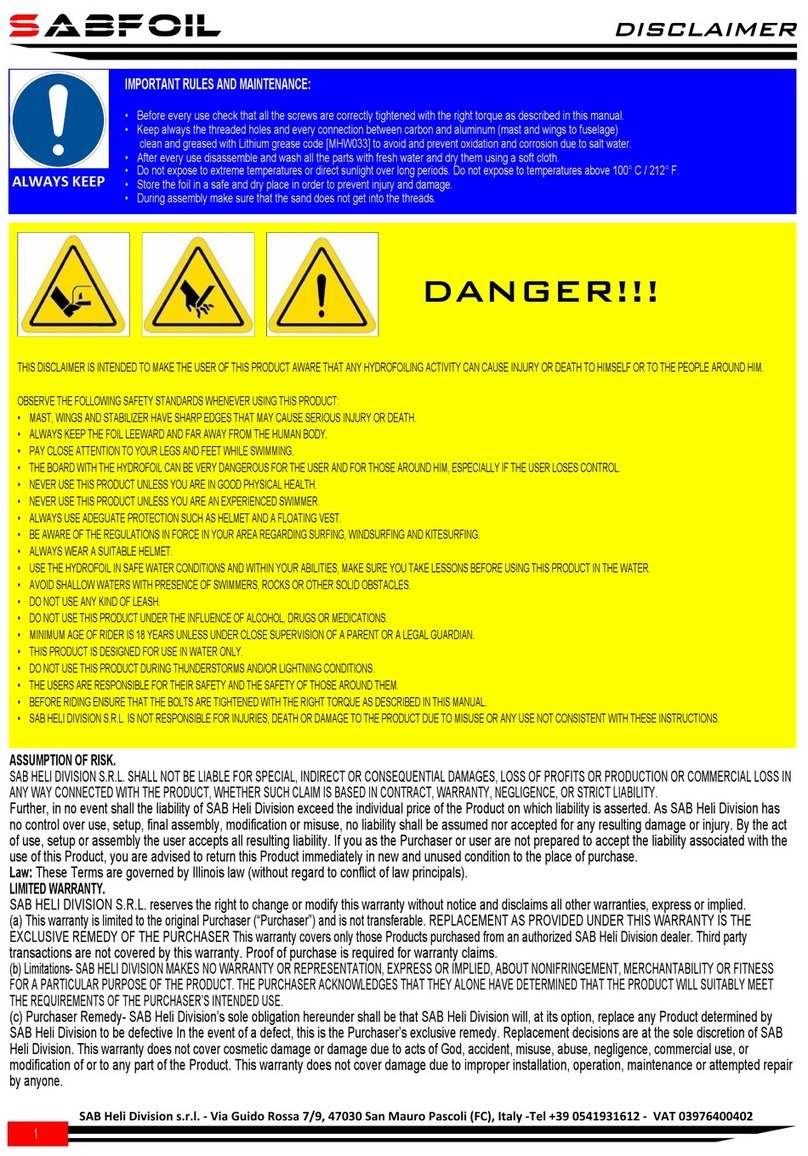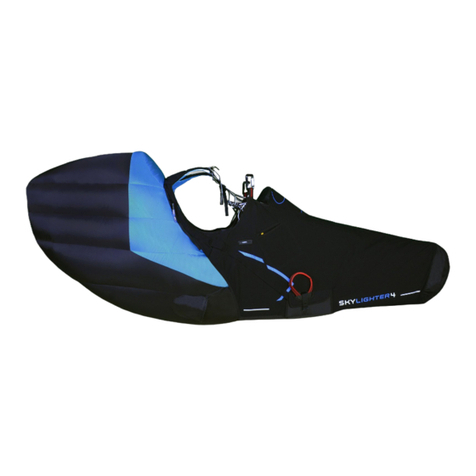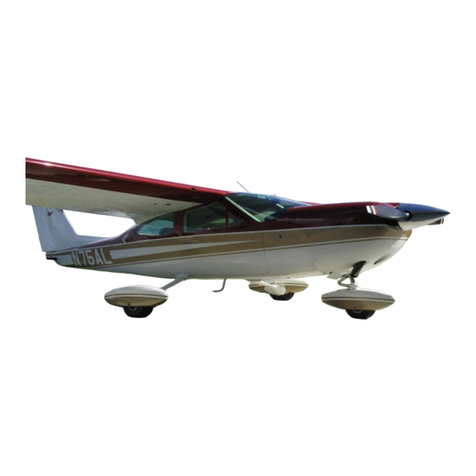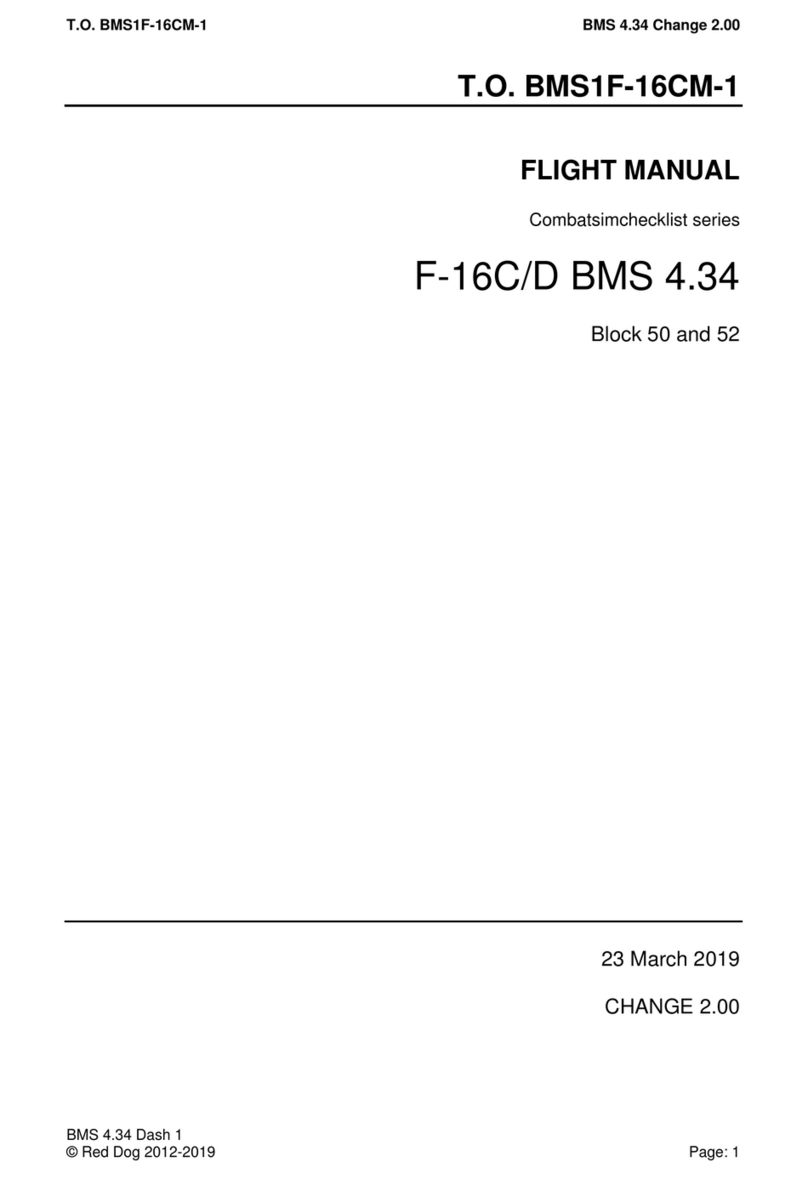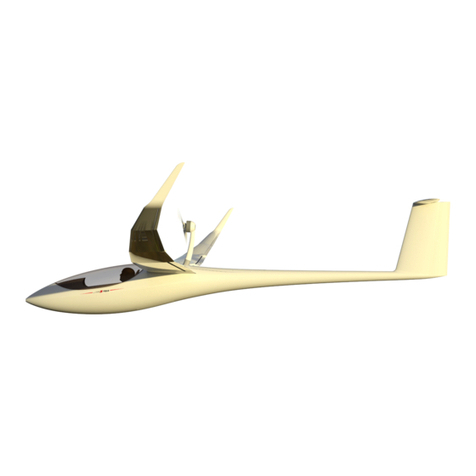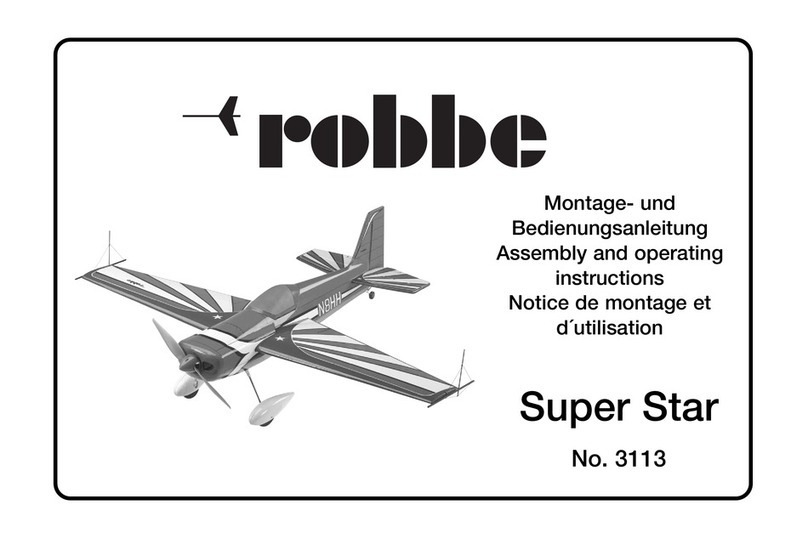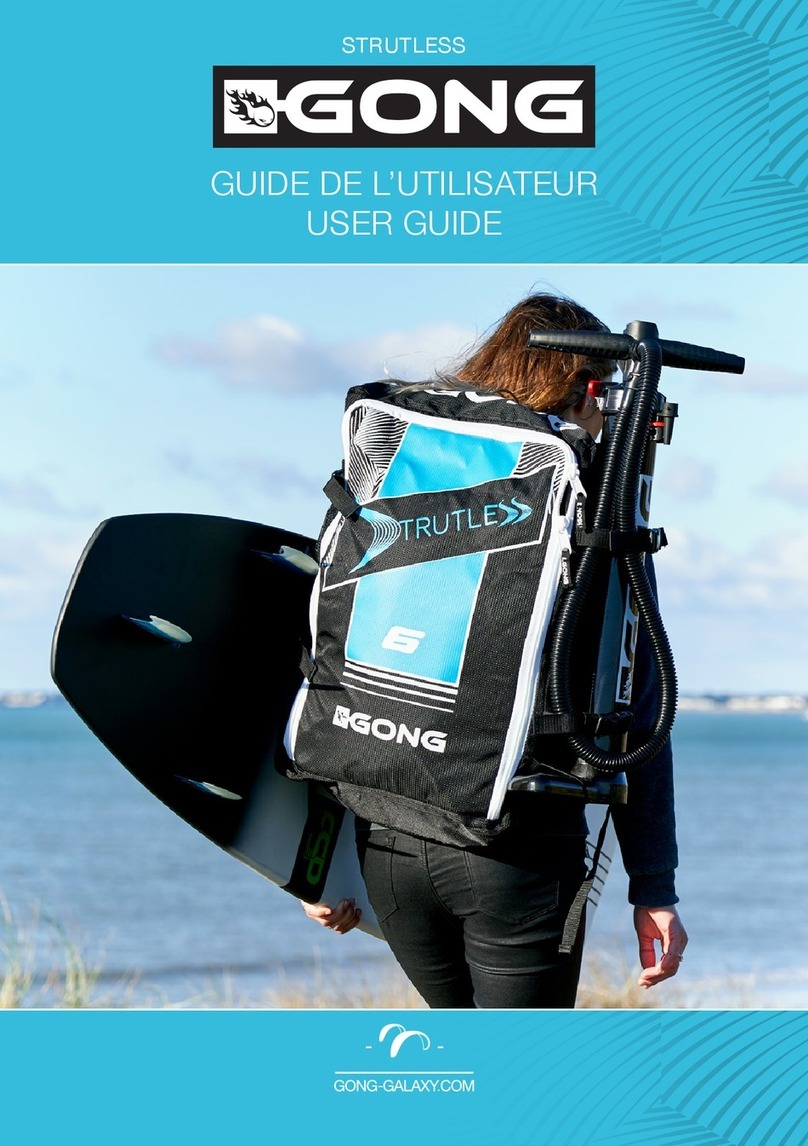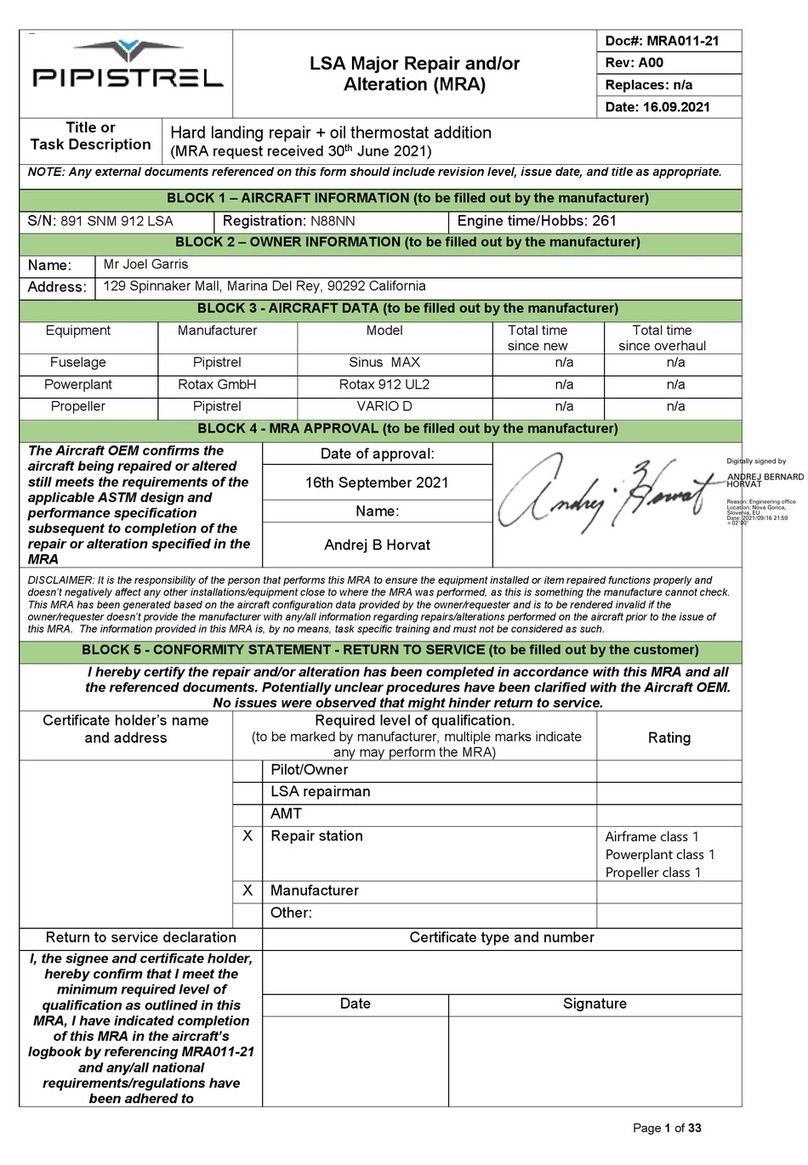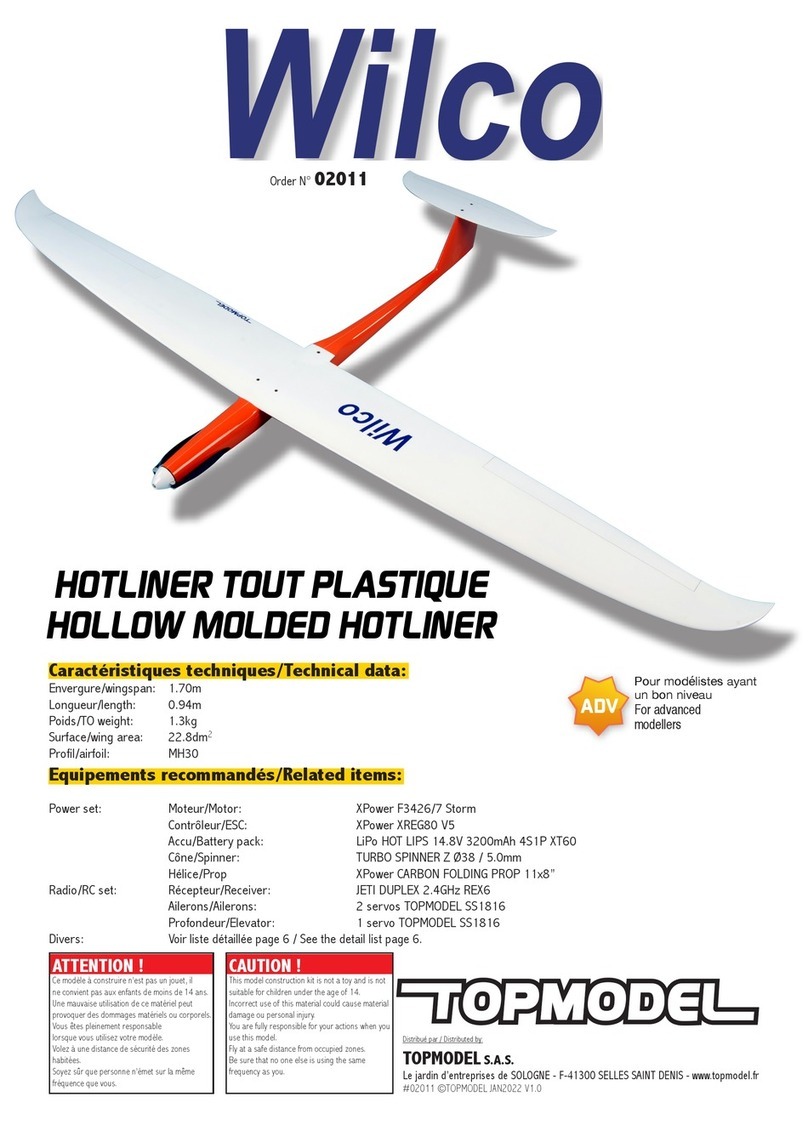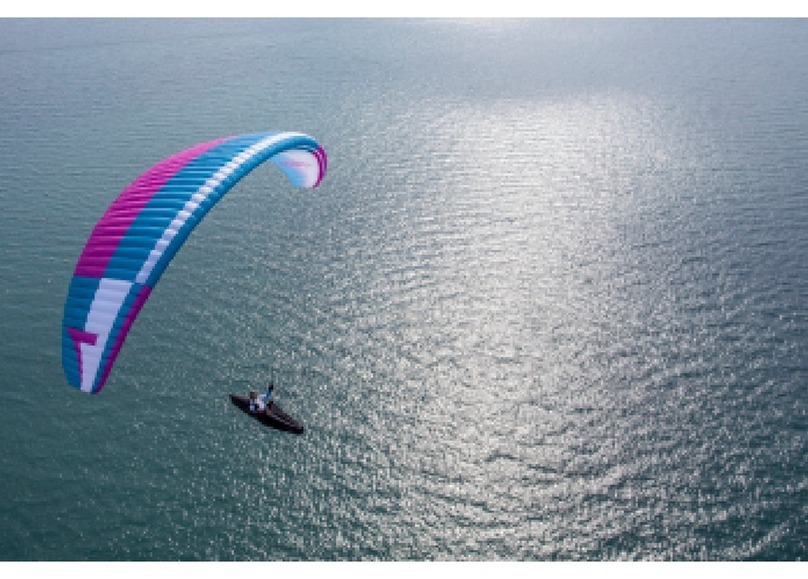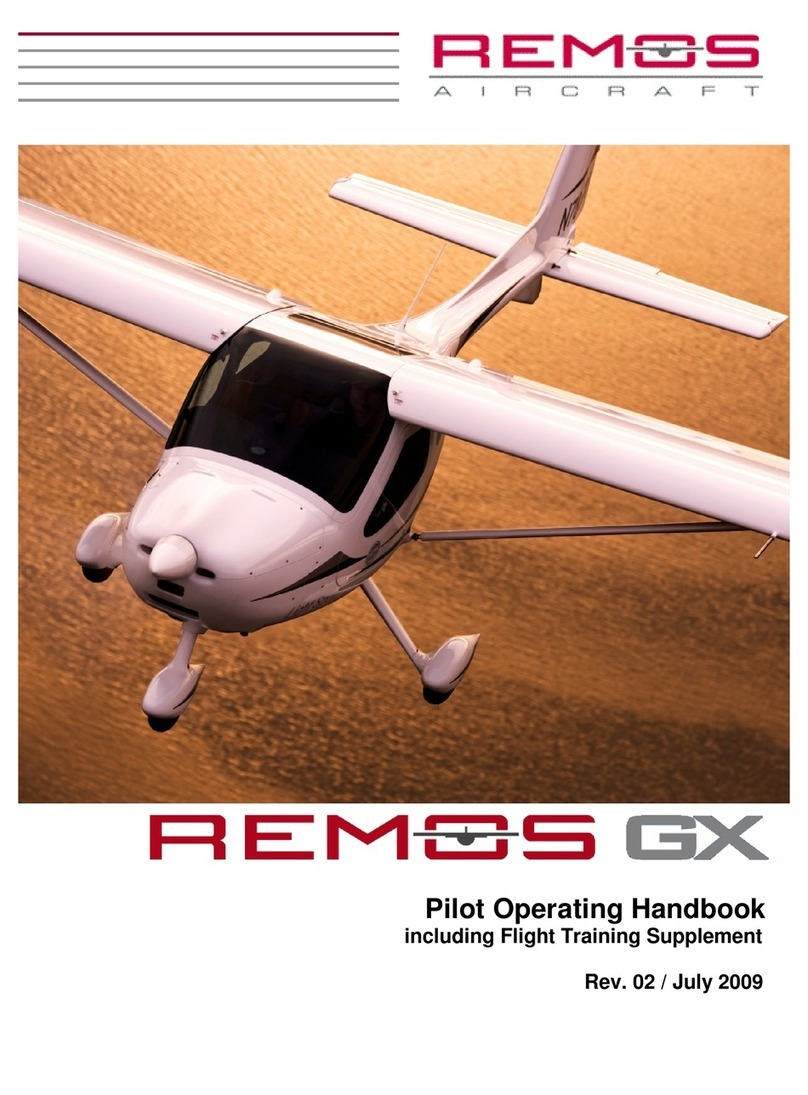AEROPLANE HEAVEN ELECTRA 10A User manual


This Electra 10 A Cockpit and Flying
guide has been produced to make getting
acquainted with your new aeroplane,
both simpler and more fun. To this end,
this is not an “of�icial” pilot’s manual and
should not be considered such.
This twin engined American classic was
Lockheed’s �irst twin engined all metal
design ( Interestingly designed by Lloyd
Stearman - also the designer of the PT
stearman. ) . We hope that you will take
some time familiarise yourself with some
of the options and also some of the few
limitations.
Your new Electra also comes witha
modern avionics packaged should you
with to use this. The utiilisation of which
is detailedfurther in this guide.
We won’t be teaching you how to �ly, that
is not the purpose of this guide. We are
going to assume that you have a good
working knowlege of �light simulators
and �lying in them.
All the controls on the Electra are
relatively simple to get to and are laid out
in a sensible and pilot friendly manner.
As much as possible we have adhered to
the stock naming conventions and stock
animations and code.
We thank you for purchasing the Electra
and hope that you enjoy �lying the
aeroplane as much as we enjoyed
making it.
Fly it again Sam...
Important note:
Electra 10 A
Dimensions:
Wing span 9.61 m ( 458 ft)
Length 11.8 m ( 38 ft 7 in)
Height 3.1 m ( 10 ft 1 in)
Wing area 42.6 m 2 ( 458 sq ft )
Empty weight 2930 kg ( 6454 lbs )
Loaded weight 4760Kg ( 10,500 lbs )
Performance :
Max speed 325 km/h (175 kt )
Cruise speed 283 km/h (153 kt )
Stall speed 120 km/h ( 65 kt )
Landing speed 105 km/h ( 57 kt )
Service ceiling 21,250 ft.
Max range 1305 km (705 nm).
Powerplant :
2 x Pratt & Whitney R-985 Wasp
Junior SB, 450hp ( 340 Kw ) each
Once the electra is installed into your game, you
will �ind the aeroplane under the Aeroplaneheaven
manufacturer.

Cockpit left side
Please refer to autopilot section
For more information
on this panel.
1. Rear door
2. Modern avionics toggle switch
3. Clock ( repeated on copilots side )
4. Airspeed in MPH
5. Vertical speed indicator
6. AHI
7. RMI ( since replaced with turn and slip )
8. Pilot lighting ( See section on lighting )
9. Localiser and VOR switcher
10. Altitude gauge
11. ADF gauge ( ADF 1 only )
12. Panel Lighting and Avionics switch.
13. Battery switch and external power.
14. Exterior lighting switches ( box )
15. Gear switch
16. Gear indicator and pump.
17. Sperry avionics. ( See autopilot section )
18. Manifold pressure gauge
19. RPM gauge
20. Secondary Airspeed indicator
21. Prop pitch ( both engines )
22. Throttle ( both engines )
23. Mixture lever ( both engines )
24. Left engine fuel selector
25. Left engine fuel valve
26. Left engine anti ice
27. Parking brake.
28. Cold dark start switch.
1. Avionics master switch
2. Taxi light switch
3. Landing lights switch
4. Beacon light
5. NAV lights
6. Left and right pitot heater
7.

Cockpit right side
Please refer to radios section
For more information
on this panel.
1. Right engine anti ice
2. Right engine fuel valve
3. Right engine fuel selector
4. Flap lever
5. Avionics/gauges dimmer ( see lighting )
6. Radio ( see radio section )
7. Left engine fuel/oil pressure & oil temp
8. Right engine fuel/oil pressure & oil temp
9. Radio compass
10. DME ( inop at this stage )
11. Fuel gauge showing 3 tanks
12. Flood lighting dimmer ( see lighting )
13. Tailwheel lock ( inop as of SU5 )
14. Suction gauge
15. AHI
16. Vertical speed indicator
17. Right engine hours ( left is on breaker
panel next to cold dark start switch )
18. Fuel �low gauge
19. Glare shield dimmer ( see lighting )
20. Altitude gauge
21. Turn slip coordinator
22. Clock
23. Modern gauge having been ripped out
24. Outside air indicator.

Overhead panel
1. Left emergency prop feather.
2. Left engine amps and voltmeter
3. Left engine alternator switch
4. Left engine �ire switch ( inop )
5. Oil temperature/pressure indicator
6. Engine primers
7. Engine starters
8. Left engine magneto
9. Master ignition switch
10. Right engine magneto
11. Left engine fuel pump
12. Right engine fuel pump
13. Right engine oil temperature/pressure
indicator
14. Right engine �ire switch ( inop )
15. Right engine amps and voltmeter
16. Right engine alternator
17. Right emergency prop feather.
18. Elevator trim control
19. Rudder trim control

Radios & misc switches
Extra switches
1. Audio panel
2. COM 1 volume
3. COM 1 swap frequency
4. COM 1 frequency change ( MHZ )
5. COM 1 frequency change ( KHZ )
6. COM 2 ( functions same as COM 1 )
7. NAV 1 Volume
8. NAV 1 swap frequency
9. NAV 1 frequency change ( MHZ )
10. NAV 1 frequency change ( KHZ )
11. NAV 2 ( functions same as NAV 2 )
12. ADF receiver volume
13. ADF mode selector
14. ADF frequency change knobs.
15. Transponder mode selector.
16. Transponder code knobs
17. Quick start switch. This switch sets
up the Electra for a fast start either using
CTRL+E or using the start switches on the
over head panel.
18. Toggle the captains yoke. Quite
useful if �lying by yourself
19. Toggle the copilot’s yoke. Not super
necessary.

Sperry Autopilot
Modern Autopilot and avionics
1. Power indicator light
2. Rudder knob. In the real Sperry Gyropilot this allows the pilot/copilot to control
the heading of the aeroplane via the rudder control surfaces. In this simulation it is
setting the desired heading and the autopilot heading lock direction.
3. Heading indicator. The top scale indicates your desired heading ( set using the
rudder knob ) and the bottom scale indicates your current heading.
4. Cage gyro heading. Push to cage
5. Gyro heading adjustment knob
6. Aileron Knob. In the real Sperry Gyropilot this allows the pilot/copilot to control
the bank of the aeroplane via the aileron control surfaces. Not simulated ( this may
change at a later date ).
7. Arti�icial horizon and wing leveller
8. Cage Sperry AHI.
9. Gyro-pilot power. ( Also is power for the modern autopilot ).
10. Elevator knob. In the real Sperry Gyropilot this allows the pilot/copilot to
control the pitch of the aeroplane via the elevator control surfaces. In this simulation
works as an altitude hold. It will also set the hold of the Modern autopilot system.
11. Suction pressure gauge. The gyro instruments require a good suction pressure
to be maintained.
We understand that some people
like and/or require a more
modern interface to use the
autopilot to that end we have
made a modern autopilot based
on the stock AS3X.
Please note this is entirely
optional and you do not need to
use it if you dont wish to. It
works exactly the same as the
stock Touch AS3X. It is expected
that you understand how to use
such a unit

LIGHTING - main panel option
When you use the L key this is the default
lighting solution that you are presented with.
It is the most useful to gauge what is going on
with the ... Gauges. Tunrning it on manually
requires you to switch on the power which is
controlled by the switch ringed in the box
below found next to the avionics switch and
the dimmer ringed below handles the
dimming aspect of the downward facing lights.
In real life this type of lighting did not exist
however from a game point of view it is a lot
more easier to use.
This lighting is the �irst of 3 different lighting
solutions and also all 3 can be combined.
To dim the avionics ( radios and modern radio
that is currently hidden in the screenshot to
the left ) you would use the avionics dimmer
knob found on the ledge on the co-pilots side.

LIGHTING - flood light option
Here we have the �lood only option. When you add the other
lighting in at the same time you actually can get a rather fetching
pink. . The red circled dimmer switch outlined below controls bth
�loodlights at the same time. This may change in a further
iteration.. In the picture to the left we have set the lighting to
around 30 % brightness. So as you can see you can really make it
look as bright or as dim as you want. When it is at full it is very
red almost to the point of not making things readable. This is of
course also determined by your computers monitor.
We highly recommend that you keep the dimmer control to a
lower setting than full.

LIGHTING - Glareshield option
Here we have the glare shield only option. Like all lighting you
can mix and match your settings should you so wish. The red
circled dimmer switch outlined below controls the individual
lighting of each gauge. In the picture to the left we have set the
lighting to around 50 % brightness. So as you can see you can
really make it look as bright or as dim as you want.
We would council against putting all the lights on at the same
time. It looks a little like a scene from the close encounters of the
third kind!

How to start the Electra safely.
The Electra is a remarkably simple aircraft to start,
taxy and to �ly. Landing is also rather easy which is a
good thing.
The Electra can be started using the CTRL+E method
however if you are feeling adventurous or in fact are
not in too much of a hurry to get off the ground then
you can follow the following few steps.
The following steps assume a cold start. If you have
left the aircraft in an almost ready situation or used
the quick start switch then you can safely skip some
of these steps.
This guide is meant for �lightsimulator use only. If
you are a real world Electra pilot chances are you
probably have a better set of instructions than this.
Please note we provide a set of quick switches that
will allow you to be in complete cold dark start mode
( found on the breaker panel to the left of the pilot )
and a quickstart switch found under the radio stack
on the front panel which allows for an almost ready
to go start. ( Step 6 onwards )
Whilst there isn’t a right or wrong way to start a
Electra, it is good practice to start with the brakes
�irst. Then ensure that the battery is on and that you
have power to the gauges.
This is the step where you do all the things that you
would do if this was real. Now we arent saying that
you shouldnt strap yourself in, clean your windows
etc. But to be honest you might be taking immersion
a little too far.
Quick start guide
Quick switches
Step 1. Step 2.

Depending on your choice of radios modern or
classic then please take the time to tune the radios to
the required frequency. Both versions are
interchangeable. The classic version will set the
modern version and vice-versa.
How to start the Electra safely.
We shall start the left engine. First we set the fuel
valve to open and the fuel selector for the left engine
to main. We also crack the throttle open a smidge
and also ensure the props are in high RPM and
ensure the mixture is set to rich ( full ).
Next we turn our attention to the overhead panel
where we turn on the fuel pump, the left magneto to
both and the master ignition to on. We also can turn
on the alternator but being engine driven this will
not run till the engine is started.
Step 4.Step 3. Step 5.

Set the primer to the left engine by clicking the left
hand side of the switch. Do the same for the starter.
Both will return to the centre once the engine is
started. Wait for the engine to �ire.
How to start the Electra safely. Congratulations! Now let’s get into the air!
Check oil pressure and fuel pressure. Please refer to
checklist for actual amounts. If within limits turn off
the fuel pump.
Lastly check that the ignition is correctly working
and is dropping the correct amount by switching the
magnetos to either the left or right. Ensure you dont
switch them off. Repeat the process for the other
engine.
Step 7.Step 6. Step 8.

Release the parking brake and test the toe brakes for
pressure. Move your lever back to test elevator
movement.
How to take-off , fly and land the Electra. Take-off
Make sure that the mixture levers are fully in. Check
the fuel tank level and pressure . This is your last
chance to make sure you have enough fuel for your
trip.
Ensure that your �laps are set to what you require.
On a smaller air�ield you may need to the �irst notch
on the l. To help you can also set the elevator trim
tab to slight nose up.
Step 2.Step 1. Step 3.

Ensure your RPM is around 1300 RPM, She’s a heavy
( though beautiful ... Lets not forget that ) plane and
needs alittle to get starting. Maintain your brakes
and push back on the yoke a little.
How to take-off , fly and land the Electra Congratulations you are now in the air!
It’s all about power. So push the throttles all the way
to 100 % and mixtures to full.
Elevator pull up at 60 - 80 knots and your climb
speed should be between 80 - 90 knots
Well you are now in the air. Congratulations. If you
have had to use �laps now is the time to retract them
and ensure that your carburettor , cylinder
temperatures are within speci�ication. We trust you
with our aeroplane.
Step 5.Step 4. Step 6.

Whilst climbing and in cruise try to keep the RPM
within the limts of 2000- 2500 RPM. is can be
achie ed by careful throttle control and/or mixture
control. To achie e full RPM abo e 3000 you will need
to lean out the mixture a little.
How to take-off , fly and land the Electra. Cruising tips & getting ready to land
Remember to keep checking all the vital
instruments. In particular the oil temperature and
the pressure. The indicators on the overhead panel
that can be switched between the 2 measures with
the switch can be of use here.
So now that you have arrived at your destination it is
now time to land the aircraft. Before landing check
the following:
- Mixture control to full rich
- Switch the fuel pump on
- Engine RPM should be around 2000 RPM
Once you are on what you consider a good angle and
lined up for the correct runway ( please note AH is
not liable for any infractions you may incur by
landing “willy-nilly” ) then start the procedure to
land.
Cruising

Check the fuel selectors are on and that the mixtures
are back to rich. You may need to get out of trouble
quickly and you dont want the engine to stall. Make
sure that the landing gear is down ( green lights on
the indicators ). Bring your speed down to 75 – 85
knots and lower the �laps to full extended.
Landing the Electra with style and safety Congratulations! Enjoy that cold beverage!
To land you must lightly touch the front wheels
down on the runway and then by using a little back
pressure on the stick get the tail down. Whilst
applying a minimum of braking. This can be a little
tricky. We found coming in a little faster than 85
knots helped with stability. You didnt read that here
though.
Once you are down taxi to your designated parking
area and begine the shutdown sequence. You can
then let the passengers out ( not yet simulated ? )
And shut down the relevant systems. Or you could
play it again... Sam.
Step 2.Step 1. Step 3.

Limitations
We have purposely left the drone collision boxes
OFF. This is a deliberate decision to allow you to �ly
the drone inside the passenger cabin and also to
have and enjoy full access to the aircraft.
1. Prop feather switches will feather but only by
setting the pitch not feather. Should a change occur
to the main game then this may change..
2. Engine �ire bottles are fake. Possible change if
support for engine �ire is added in game.
3. Tailwheel lock is INOP. Should full support for
tailwheel lock be added to the game then this will
change
4. Sperry autopilot will work differently as
techniques evolve.
Painters tips
Each metallic livery has a slightly different
metal/rough layer and so you could if you were
super keen mix and match.
We are now utilising a right side normal metallic
roughness work �low as well as the usual left side.
Previously we used just the one side for those
speci�ic textures to keep drawcalls down but this is
now less necessary in the new game.
Limitations and tips.
Credits:
FDE : Aeroplaneheaven
Sound: Aeroplaneheaven
3d development: Aeroplaneheaven
Textures : Aeroplaneheaven
Tea making : Aeroplaneheaven
HobNob eviscerating : Aeroplaneheaven
Contact
Support : help@aeroplaneheaven.com
Website : www.aeroplaneheaven.com
Facebook : www.facebook.com/Aeroplaneheaven
Table of contents
Other AEROPLANE HEAVEN Aircraft manuals




